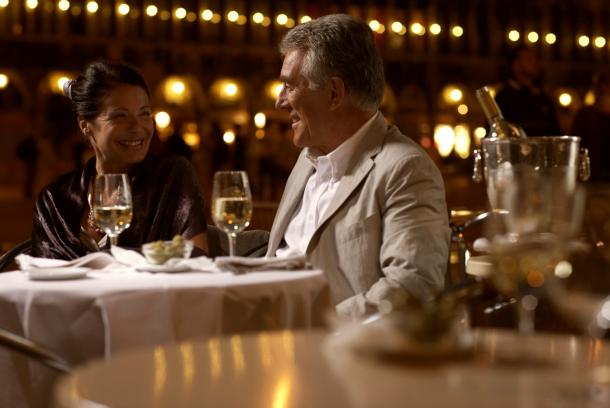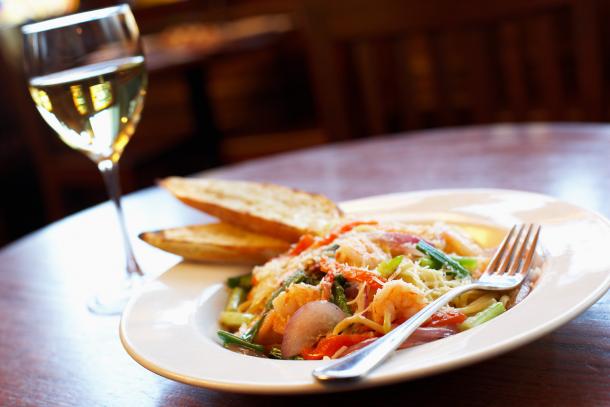Italian Recipes: Cook the Italian Way
Many tourists return from Italy, armed with pleasant memories and Italian recipes, ready to recreate the delights that they experienced while abroad. In most cases, they are disappointed to discover that this isn’t that easy. This is because the nature of Italians’ cuisine is tied into their way of life and beliefs about food. In Italy, we live to eat, making each meal out of the freshest, highest quality ingredients available. Beyond this, experiencing an authentic meal requires the proper mindset.

Italian dishes are served in a different sequence than American meals. While Americans consume their main meal of the day in the evening, many Italians eat their large meal during the middle of the day. Mealtime is considered to be a social event and the courses are brought one at a time, rather than all at once, to prolong the enjoyment. The mid-day meal is called pranzo, or lunch. Special meals, such as holidays, celebrations or business meetings are served during pranzo, rather than during the evening. These formal meals may have as many as six courses, not including the aperitivo and antipasti that take place beforehand. Even casual meals with everyday Italian recipes generally have several courses, perhaps a primo, secondo, and dolce or fruit.
For formal dining, the first course is the aperitivo. Generally this is served to standing guests as they arrive. Sparkling and still wines such as champagne and prosecco are offered as well as nonalcoholic options. Simple Italian recipes for foods such as miniature quiches and finger foods like cheese, nuts and thinly sliced bresaola (salt cured beef) may be offered along with the beverages.
Antipasto is served to company after they are seated at the dining room table. The Italian dishes that are offered will be more substantial. Extravagant affairs may offer traditional Italian recipes for appetizers in such large quantities that it is easy to become full, even before the meal has started. Despite this, it is not considered when counting the courses of the meal. Offerings may include a variety of cold salumi (pork and other preserved meats), cheeses, or seafood. Famous Italian recipes include bagna cauda, a piquant dip for crudites made with olive oil, fresh garlic and anchovies, and thinly sliced raw beef with a rich mayonnaise dressing, known as carpaccio.
The first of the Italian dishes that is counted as part of the formal meal is referred to as the primo. This is a substantial dish, but rarely meat. Authentic Italian recipes to serve as a primo include polenta, pasta or risotto. If the cook has been preparing the long simmering Neapolitan ragù, the sauce will be ladled out of the pot to serve during the primo, making sure to reserve the large pieces of meat for later in the meal. For formal meals, more than one primo may be offered. These will always be served individually so that each of these great Italian recipes can be presented perfectly cooked.

Meat or other filling foods are generally served during the secondo, or second course of the meal. Like the primo, there may be more than one offered during a formal meal. Italian dishes presented during the secondo are often accompanied by contorni, or side dishes. Easy Italian recipes for contorniinclude vegetables dressed with fruity extra virgin olive oil or starches, such as roasted new potatoes.
Hopefully after all of these courses, the guests still have some room for dolce, or dessert. Depending on the region of Italy where the meal is offered, it may consist of baked cakes, creamy panna cotta, a custard thickened with gelatine rather than eggs, or the layered coffee soaked ladyfingers and mascarpone dessert called tiramisu. Gelato is another popular option for dolce. After dessert, assorted fruits (frutta) may be offered, sometime paired with cheese and nuts.
Caffe e digestivo, or sweet digestive herb, fruit or nut flavored liqueurs, followed by small cups of a concentrated espresso coffee, are generally the last course. The digestivo may also be referred to as ammazzacaffè (coffee killer) if the order is reversed and the coffee is served before the liqueur. In some Northern regions, the digestive liqueur is poured into the coffee cup to rinse it out before drinking.
If authentic Italian food is your goal, there’s nothing like visiting Italy and experiencing it firsthand. Still, with the right mindset, a good collection of real Italian recipes, like the one we hope to offer you in this section, and plenty of fresh produce, you can create a delicious Italian feast almost anywhere.
Related news stories:
- The Real Italian Dinner: A Multi-Course “Slow Food” Experience
- Italian or Italian-American? It Is Definitely NOT the Same Food!
